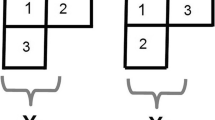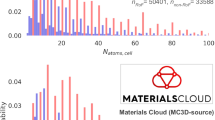Abstract
A. GERSTÄCKER, H. Möller, and A. Reis have published an account of the crystal structure of pentaerythritol tetra-acetate (Zeitsch. f. Kryst., 66, 355; Jan. 1928), in which they assign the crystals to the space-group C34h with a simple tetragonal lattice (Γt). There are two molecules of pentaerythritol tetraacetate to the unit cell and the space-group C34h with a Γt lattice requires eight asymmetric molecules per unit cell. Therefore the molecules of pentaerythritol tetra-acetate must have some kind of fourfold symmetry. There are two types of fourfold symmetry possible in this space-group—either a simple fourfold rotation axis or a fourfold alternating axis. Messrs. Gerstäcker, Möller, and Reis have chosen the former, since it leads to a molecule which can be built into a chain-like structure, and the latter does not.
This is a preview of subscription content, access via your institution
Access options
Subscribe to this journal
Receive 51 print issues and online access
$199.00 per year
only $3.90 per issue
Buy this article
- Purchase on Springer Link
- Instant access to full article PDF
Prices may be subject to local taxes which are calculated during checkout
Similar content being viewed by others
Author information
Authors and Affiliations
Rights and permissions
About this article
Cite this article
KNAGGS, I. The Form of the Carbon Atom in Crystal Structure. Nature 121, 616–617 (1928). https://doi.org/10.1038/121616a0
Issue Date:
DOI: https://doi.org/10.1038/121616a0
Comments
By submitting a comment you agree to abide by our Terms and Community Guidelines. If you find something abusive or that does not comply with our terms or guidelines please flag it as inappropriate.



